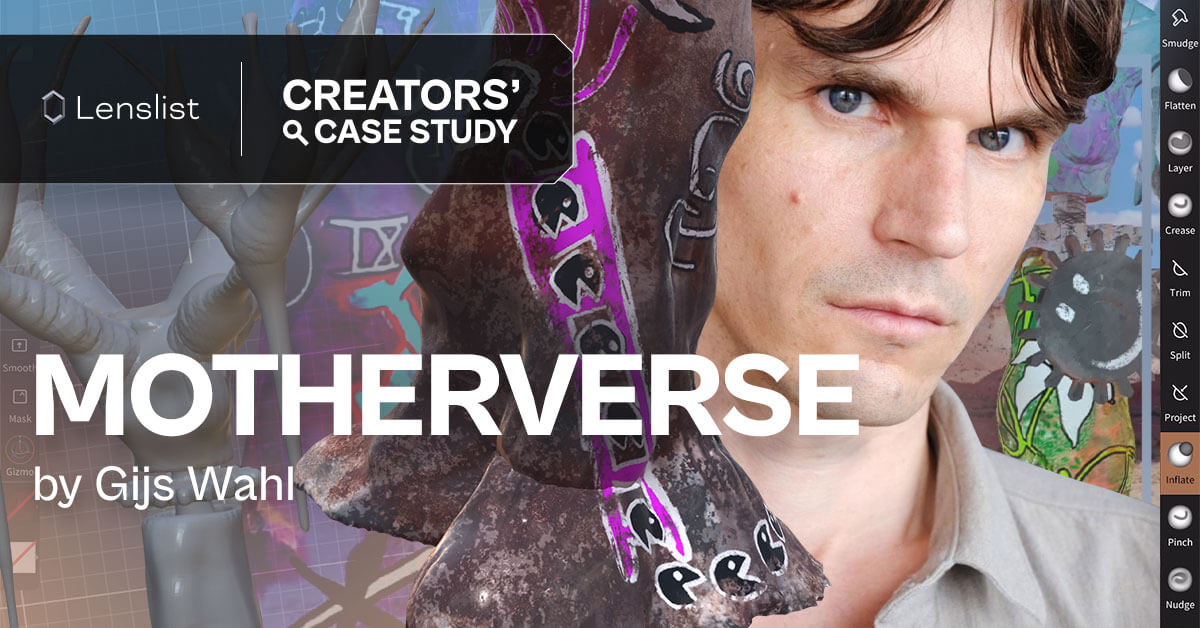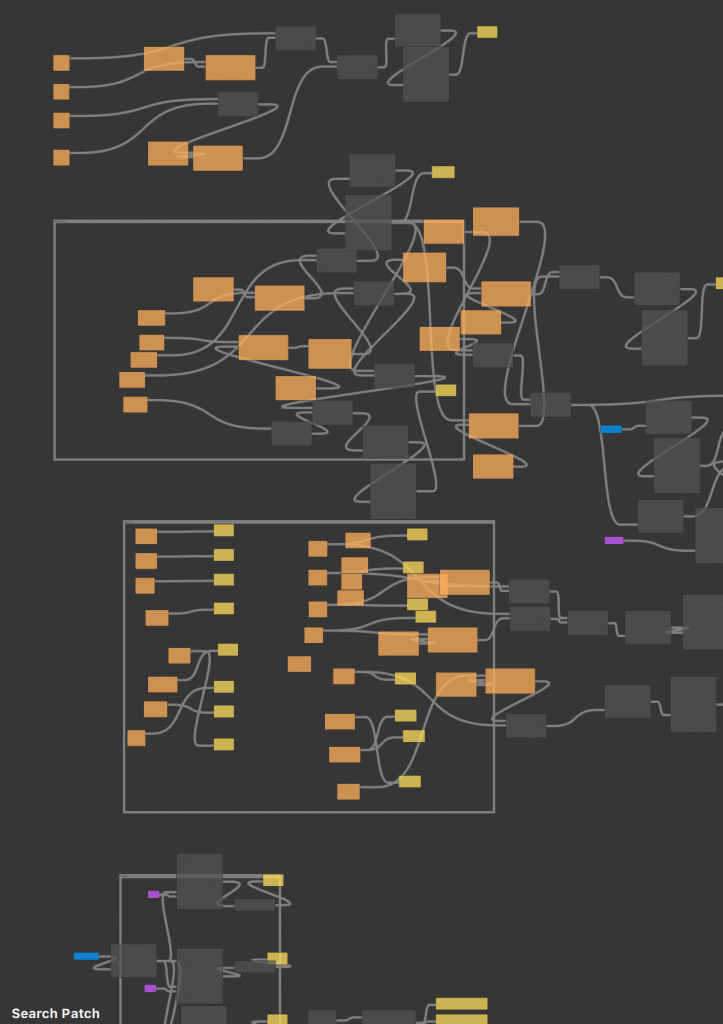Creator’s Case Study – Gijs Wahl “Motherverse”

Beauty in simplicity? Not necessarily! 🎭 Sometimes, looking at the details behind hard and diligent work can help us understand complex art, its completeness, and the hidden history! 💫🌳🦋 In today’s Case Study, you will see an overall picture that combines everything essential and significant into one digital body… 💎
One idea that unites all of us, all our faiths, ideologies, and cultures. 🪬 After all, this is exactly what we strive for – to be different but to come together as a whole, having one beginning and end. 🧩 It is about an exciting continuation, including the continuation of digital art, which allows us to create our unique metaverse, led by the “Motherverse”. 🔗🪐 Learn more about this philosophy, its conception, development, and its role in our space with the outstanding XR Creator Gijsbert Wahl. ✨
What was the idea for creating an effect, and how did you come up with it?
The idea for a Motherverse came to me as a kind of consoling object around which people from different cultures and perspectives could gather around and find connection through an act of belief: imagining a common source without necessarily designing it. The Motherverse was to be an illustration of this idea, and a technical sketch on how it could be implemented as an actual work of art that is both physical and digital. The Motherverse represents an imaginary source where all perspectives flow from, hence the name. I imagine all our realities, all our cultures, and metaverses to connect to each other through such unreal imaginary objects. This object need not exist, it is simply there to show how all perspectives are codependent on every other perspective.

For the shape, I choose something that appears to be a mixture of an old petrified tree and some kind of physical organ. I was trying to design a shape that I imagine would speak to us as well as to our prehistoric ancestors. However, I did not want to create some kind of god or idol. To show our own role in the machinations and dynamics of reality and the mirror game of perspective, the tree is revealed to be moved internally by a rather more human-looking design: a system of interlocking cartwheels that makes the tree revolve around itself.
Do you draft a plan of how you want to develop an effect, could you tell us about the preparation of a workflow?
Generally, I work by just experimenting. These experiments then lead to a library full of possibilities, so that each idea for a more finished work often consists of a combination of several of such experiments, excavated from my own library. I did the same with this project. In order to make it possible to create these moving portals that show different aspects of reality I looked back at older works such as Mirror Stage, to see how I had created a mask that can reveal a different camera texture behind it.
Could you describe us the steps of how you create an effect – tools you used, templates, features, biggest challenges, and milestones?
First I created the main scene. For this, I used Fusion360 on my mac. This app is great at setting up a geometric sketch and is free to use if you don’t make much money. I then imported it into Nomad Sculpt on the iPad to easily mold the object into a more organic shape.
I love the iPad with pencil because while it may be able to do less, it makes the whole experience of designing a lot more direct and physical, and more similar to working with paint or clay. I unwrapped the UV’s and imported the object into Procreate to paint its textures.
Then the whole object could be imported into Spark AR. That is where the more difficult technicalities start, such as getting the object the right size in each experience, and the plane tracker to behave a bit more stable.

Another challenge was more personal, and that is organizing the whole project in a clear way. I normally prefer to work in one big chaos, as organizing often gets in the way of experimenting, as it makes every change feel like a hassle after the organizing is done. The two are of a different state of mind which in my case seem incompatible. However, for me, it’s the change that is more important than the organization. But as this project was going to contain 4 portals, I knew it was going to be too complex if I did not somehow try and clearly divide the different realities in the effect.
If you struggle with this, or other things too, my tip would be to forget about willpower.
Don’t force yourself to do something that does not flow from you creatively.
Instead, be curious about the thing you don’t like, and explore it to create a sense of play instead of work. When I do that I notice I do like to order in colors, try different ordering systems etc, and the organizing becomes a creative endeavor in itself! And don’t worry if half-way your attention is going a different direction, half organized probably means you know your way around your own project by now.
How does your effect work?
The Motherverse is a tree that is cut in half. The two halves are connected with iron rods and cartwheels that make it possible for the top to spin around its y-axis, making the four screens that are connected to the branches revolve around the tree. Each window reveals a different version of the tree. On top of the tree, between its branches is a revolving sphere, like a celestial object, that shows a wildly moving chaotic mixture of all the drawings used in the perspectives.
Does it meet your expectations? Did you learn something new in the process?
Because this project was a bit bigger and more planned than how I normally prefer to work, It was a good way to discover that my abilities (especially in organizing) did grow in a few years’ time. If you always make something new, or repeat what you already did, you may not notice this. So in order to give yourself some certainty of your own capabilities, it is always good to dare yourself to a bit of a bigger project through which you can reflect on past works and the technical and creative solutions you have gathered in the process of making them.
However, in the end, this project was more of an illustration of my philosophy and my works, and less direct as many of my other AR designs. A more simple effect can sometimes carry this spirit just as much without needing to be an illustration of themselves. And so I feel this work became a bit more meta and a bit less direct as I would wish it to be. But the positive side of this is that I feel The Motherverse is a very good blueprint for an actual physical work of art that blends the physical with the digital, making the experience again a lot more direct. I believe the interesting interactions do not lie within the screens of our phone, but in the ways in which we manage to really mix up the different realities so that the screens are not the ultimate frames, but simply another part of the grand mixture that is reality.
Breaking all the patterns and innovating an absolutely superior concept, designed by a Creator pushing the boundaries of ARt – this is exactly what we managed to capture today. 🌟
It was a great pleasure to talk to you Gijsbert, revealing all the details of your artistic work projecting such global ideas. 💎 We know you won’t stop there and we can’t even imagine what you’re up to next! 💓☄️

